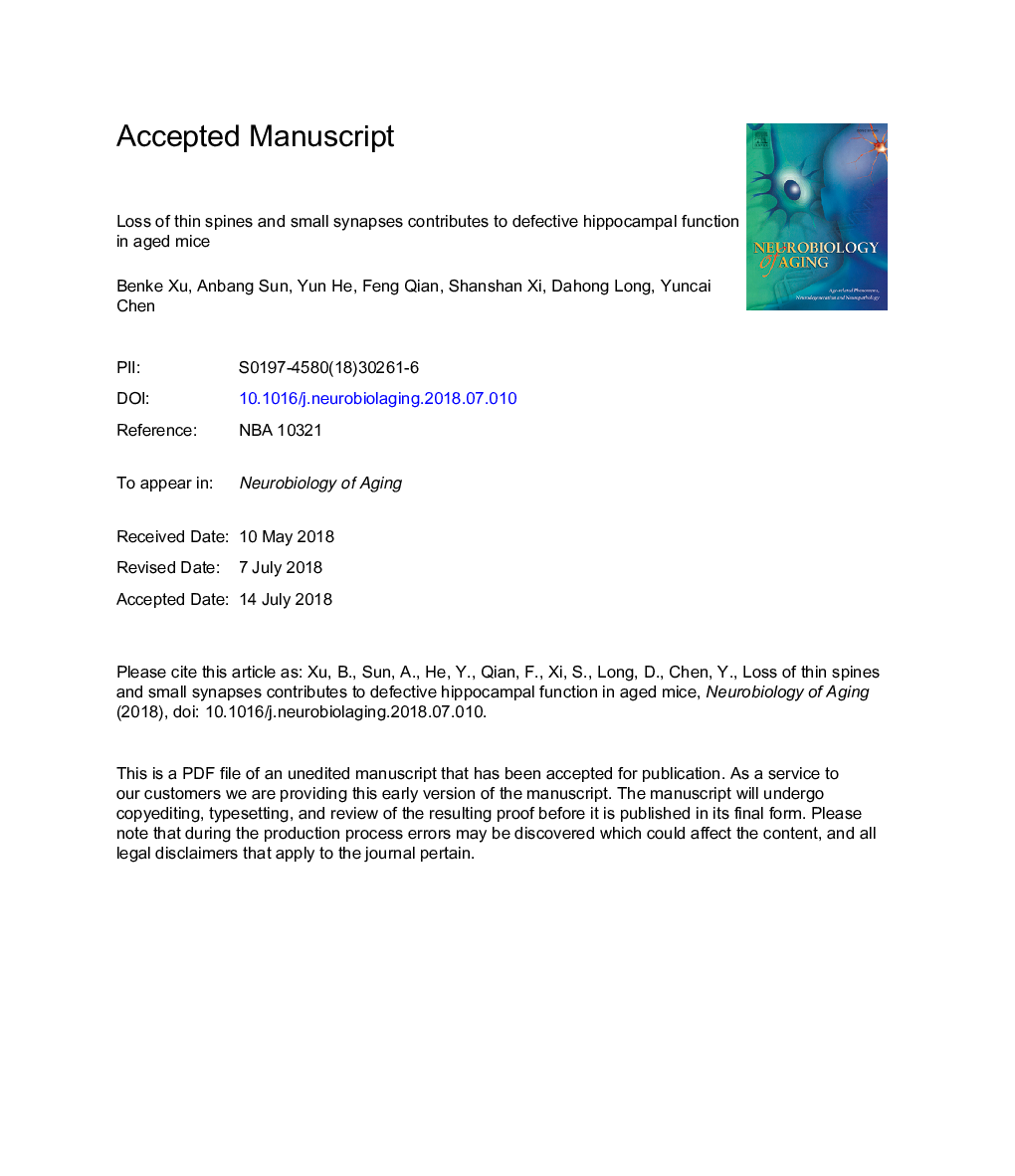| کد مقاله | کد نشریه | سال انتشار | مقاله انگلیسی | نسخه تمام متن |
|---|---|---|---|---|
| 6802800 | 1433513 | 2018 | 37 صفحه PDF | دانلود رایگان |
عنوان انگلیسی مقاله ISI
Loss of thin spines and small synapses contributes to defective hippocampal function in aged mice
ترجمه فارسی عنوان
از دست دادن ستون های نازک و سیناپس های کوچک باعث نقص عملکرد هیپوکامپ در موش های سالم می شود
دانلود مقاله + سفارش ترجمه
دانلود مقاله ISI انگلیسی
رایگان برای ایرانیان
کلمات کلیدی
موضوعات مرتبط
علوم زیستی و بیوفناوری
بیوشیمی، ژنتیک و زیست شناسی مولکولی
سالمندی
چکیده انگلیسی
Aging is a normal physiological process associated with impairments in cognitive function, including learning and memory. Here, the underlying synaptic mechanisms by which aging leads to the decline of spatial learning and memory function were investigated in 25-month-old aged mice versus 2-month-old young mice. Deficits of spatial learning and memory, as well as selective loss of thin spines, but not mushroom-type spines on apical dendrites of CA1 pyramidal cells were found in aged mice. Specifically, loss of thin spines in aged mice with memory deficits was primarily found on dendritic segments located in the Schaffer pathway, and the density of thin spines significantly correlated with spatial memory performance. The loss of thin spines was evidenced by a decrease in small synapses that express diminutive amounts of postsynaptic density protein-95 and α-amino-3-hydroxy-5-methyl-4-isoxazolepropionic acid receptor subunit GluR1. Furthermore, mushroom-type spines and GluR1-expressed large synapses were not affected in aged mice with impaired memory. Taken together, these data suggest that the selective loss of those highly plastic thin spines with sparse postsynaptic density protein-95 and GluR1 receptors may significantly contribute to cognitive deficits in aged individuals.
ناشر
Database: Elsevier - ScienceDirect (ساینس دایرکت)
Journal: Neurobiology of Aging - Volume 71, November 2018, Pages 91-104
Journal: Neurobiology of Aging - Volume 71, November 2018, Pages 91-104
نویسندگان
Benke Xu, Anbang Sun, Yun He, Feng Qian, Shanshan Xi, Dahong Long, Yuncai Chen,
